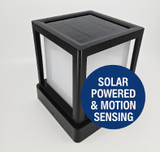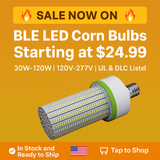Induction Ballasts – The Weakest Link or The Unsung Hero?
According to the United States Department of Agriculture, the direct effects of lighting on human performance and productivity include the inability to resolve detail, fatigue, and headaches. For these reasons, our factories, warehouses, and workplaces must have effective and reliable lighting systems.
Induction lamps offer cost-efficient, reliable, and effective lighting but only if they’re controlled properly. This is where the ballast, the unsung hero of lighting, comes in. The ballast starts the lamp and controls the operation of the lamp. Without it, you have no light at all.
Of course, as the old saying goes, “sometimes you’re the villain and sometimes you’re the hero”. Since the ballast determines whether or not the lamp turns on and works properly, it also means that the ballast can quickly become the weakest link in the induction lighting system. If your ballast stops working, your light stops working.
Regardless of whether your project is a retrofit, a new install, or even a maintenance project, choosing the right ballast will determine whether it is the unsung hero of the day or the weakest link.
How Long Do Ballasts and Other Induction Lighting System Parts Last
Induction lighting systems consist of three main parts. These include the induction lamp, the light fixture, and the ballast. The induction lamp is sometimes referred to as a bulb, although this technically is incorrect. It’s more than just a bulb, as it consists of both a fluorescent discharge tube and an induction coil.
All three parts of the induction lighting system work together to produce light. This means that one part is only as good as the other two parts. We’ll take a look at the lifespan of each of these parts in the following sections.
The Lifespan of Light Fixtures
A light fixture serves as the housing for both the induction ballasts and the discharge lamps. These fixture lifespan ratings are generally based on the lifespan of the ballast but they don’t have to be. The ballasts and lamps used inside of the light fixtures can be replaced almost indefinitely. This means that a well-made light fixture could easily outlive the person who bought it.
Whether or not the light fixture lasts a lifetime is determined by these three main factors:
- The materials the light fixture is made of.
- How well the light fixture is taken care of.
- How willing the owners are to replace the ballasts and lamps within the light fixture.
Light fixtures made from aluminum and poly-carbonate lenses are going to last much longer than light fixtures made from cheap metals and cheap plastics. Of course, the materials used won’t matter if the light fixtures are abused or left out in harsh conditions. The type of fixture also won’t matter if the owners aren’t willing to eventually replace some of the parts. In this case, the fixture won’t last any longer than the ballast or the lamp (whichever dies first).
The Lifespan of Induction Lamps
According to the Nebraska Department of Environment and Energy, a well-built induction lamp can have a lifespan of up to 100,000 hours. This means that if the lamp were to run 24 hours a day, 7 days a week, it could live on for over 11 years. Since most buildings don’t operate 24 hours a day, many induction lamps live on for 20 years or longer.
It should also be noted that there are two different kinds of induction lamps. These types are known as either external induction lamps or internal induction lamps. As described by the Edison Tech Center, “external induction lamps are designed to allow heat to escape directly into the air from the coil”. Hence, external induction lamps last almost twice as long as internal induction lamps.
The Lifespan of Induction Ballasts
The induction ballast tends to be the part that wears out quickest. This is why many people consider their induction ballast the weakest link in their lighting system. Fortunately, the induction ballast doesn’t have to be a short-lived product.
A high-quality induction ballast can last up to 100,000 hours before it needs to be replaced. This puts the ballast's life span in line with the highest quality induction lamps and makes the entire system robust. In this case, the right induction ballast does become the unsung hero of the lighting system.
Why Do Some Ballasts Last Substantially Longer Than Others
It’s worth mentioning that most induction ballasts don’t last 100,000 hours. The reason for this is simple. Most induction ballasts aren’t made to last very long. Cheap induction ballasts are made with the price in mind rather than the quality.
Fortunately for U.S. businesses, U.S. induction ballast manufacturers make the highest quality induction ballasts. This is the reason why so many people search for ballasts with the Made-In-USA label. These ballasts may cost a bit more upfront than the ballasts made overseas, but they save companies both time and money in the long run.
The Relationship Between Induction Ballasts and Induction Lamps
Unfortunately, it won’t matter how well the lamp is built if the ballast fails. This is because the ballast controls the electrical current sent to the lamp. Ballast are high-wattage, high-frequency generators. This is where the electronics take a beating. Especially so in high-temperature areas. These ballasts can overheat and burn out. When that happens, the induction light will fail to light up.
Usually, it's "do or die" for the ballast. But sometimes they can start working incorrectly. If the ballast sends too much current or the wrong frequency to the lamp, the lamp will overheat and burn out. The current sent from the ballast to the lamp will determine whether or not the lamp burns out quickly or slowly.
Because lamp wattages differ, ballasts differ as well. Both the lamp and the ballast must have the same wattage ratings. If you buy a lamp that needs 54 watts of power to function properly, you need to buy a ballast that sends 54 watts of power. Pair a ballast that sends 80 watts of power to a lamp that needs 54 and the lamp will burn out. Pair a ballast that sends 48 watts of power to a lamp that needs 54 and it won’t light up as it should, or not at all.
Retrofits and Self-Ballasted Lamps
Matching up the proper ballast with the proper lamp isn’t an issue when you buy a brand new light fixture. In this case, the light fixture comes with a lamp and the right ballast for the lamp. Problems typically arise when buying a replacement induction ballast. Retrofit ballasts must match the electrical supply and the lamp wattage it will light.
One way to ensure this is to simply buy a retrofit kit. Retrofit kits include both the ballast and the lamp so they help take the guesswork out of the equation and make the retrofit process easier. As the lamp may have already seen most of its lifespan, buying the two together can save money in planned maintenance and lower parts and shipping costs.
When retrofitting CFLs and some HID lamps, you can buy self-ballasted induction lamps instead. You may think there is no ballast present, but it’s there. Similar to CFLs, they contain a small ballast at the base of the lamp. Although not visible, a self-ballasted lamp contains the ballast inside the lamp itself. These lamps are set to work properly on their own so they’re easier to install and require less research to buy.
At one time, CFLs were the perfect replacement for incandescent bulbs. They were the more efficient and longer-lasting choice. Now, self-ballasted induction lamps are the perfect retrofit for CFLs and high-wattage incandescent lights.
Buying Quality Lighting
Whether you are looking for induction ballasts, induction lamps, light fixtures, or retrofit kits, make sure you buy a product that will stand the test of time. But how do you know which ballasts and lamps will provide you the lowest maintenance and replacement costs?
One way to ensure that you’re buying a quality lighting product is to ensure that it comes with a long warranty period. The longer the warranty period, the more faith you can have that the manufacturer believes in it and stand behind it.
This is why Induction Lighting Fixtures only sells quality Made-In-USA ballasts, like ILF and LVD ballasts. These ballasts are backed with a five-year manufacturer’s warranty. This gives assurance that they aren’t going to burn out on you for years to come. They typically last between ten and twenty years.
Another element of a high-quality product is how the ballasts are designed. Our manufacturing facility here at ILF has an R&D department that is constantly running tests and improving on the products.
Our ballasts are designed with heat dissipation in mind. This is done through a design with tailoring baseboard complication, which makes for a more efficient heat dissipation process. Designs like this ensure that the ballast won’t overheat and that the lamp won’t prematurely burn out. These are some of the reasons that ILF and LVD both have a solid reputation for being built to last.
Find your replacement induction ballasts
Get your induction lamp/ballast retrofit kit
For a more in-depth understanding of the science behind it all, check out our resource guide on how induction lamps work.
Recent Posts
-
How Long Will Solar Powered Lighting Operate in the Rain?
How Solar Light Fixtures Can Run for 10 Rainy Days If you’ve ever wondered how a Commercial solar li …Jul 30th 2025 -
Spotlight - The IL-SPG54 Smart Solar Walkway Light: Where Performance Meets Simplicity
Introducing the IL-SPG54 Smart Solar Walkway Light: Where Performance Meets Simplicity When it comes …Jun 16th 2025 -
Corn Bulb Sale - While supplies last!
⚡ Limited Time Sale – BLE Series Corn Lamps Starting at $24.99! Stock up now while supplies last – p …Jun 11th 2025





